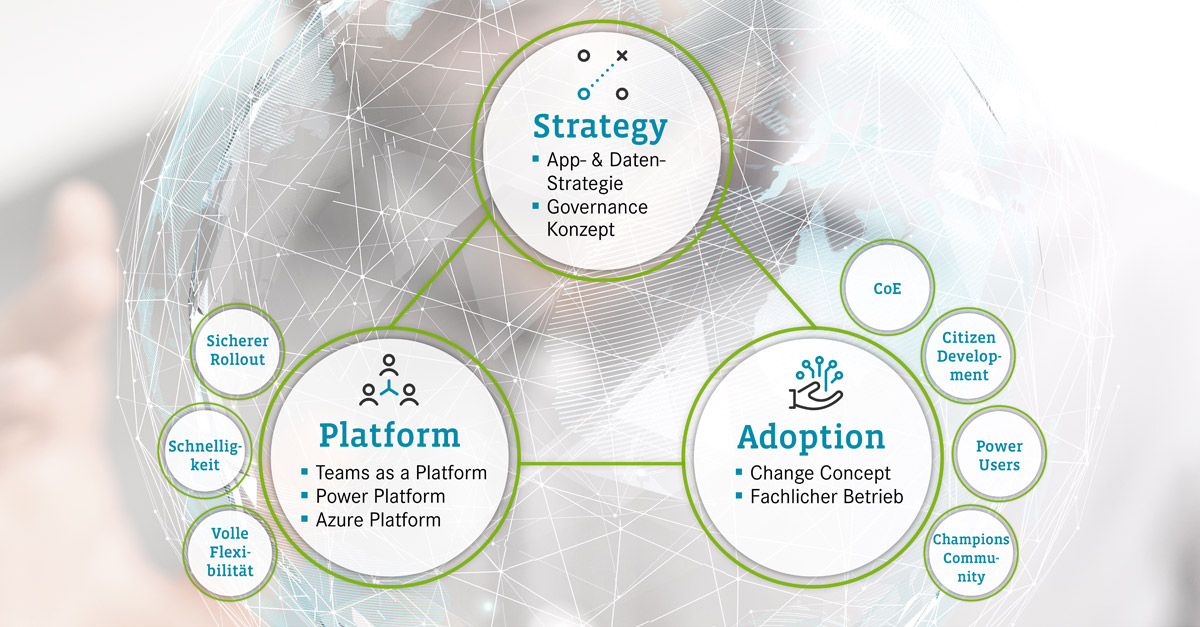The digital transformation has been on companies’ agendas for many years already. But it has taken modern solutions such as the collaboration tool Microsoft Teams to make them realize that other applications and business processes must be digitized even more - a process that is made more efficient with the right strategy, platform and adoption.
What was often discussed as a scenario for the future had to be implemented within a matter of weeks due to the COVID-19 pandemic: home office, digital workplace, flexible business processes - to name just a few. In particular, the rapid introduction of modern collaboration tools such as Microsoft Teams became a must-have for video conferences and off-site collaboration.
Now that these solutions have been in use for about six months, more companies see the growing discrepancy between modern applications and their current processes. They notice that “media breaks” are more painful than before. To continue digitizing their business processes, they require digital signatures, remote access to applications, rapid and customized reporting, mobile apps and avoiding double licenses for Microsoft 365 and legacy systems.


